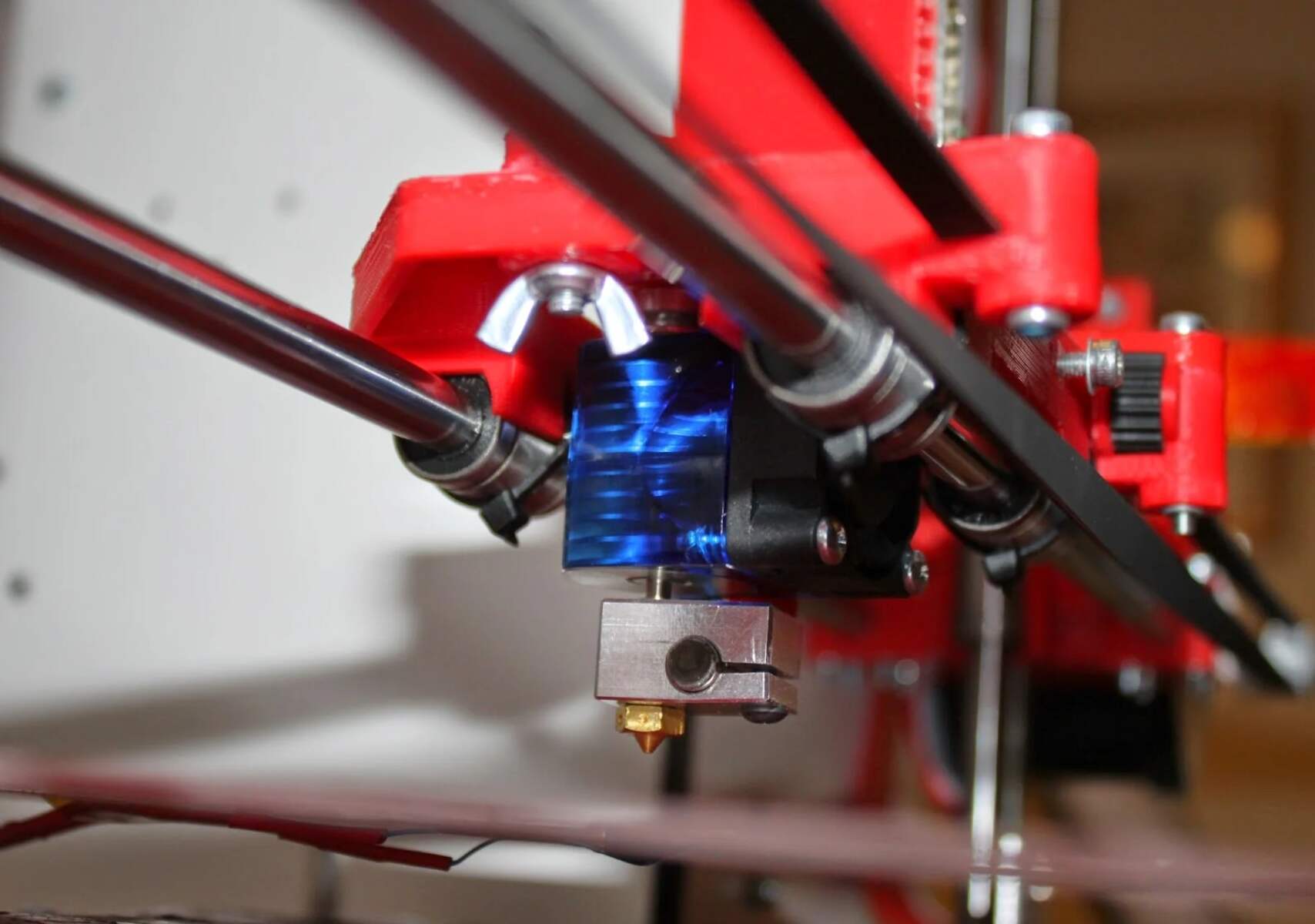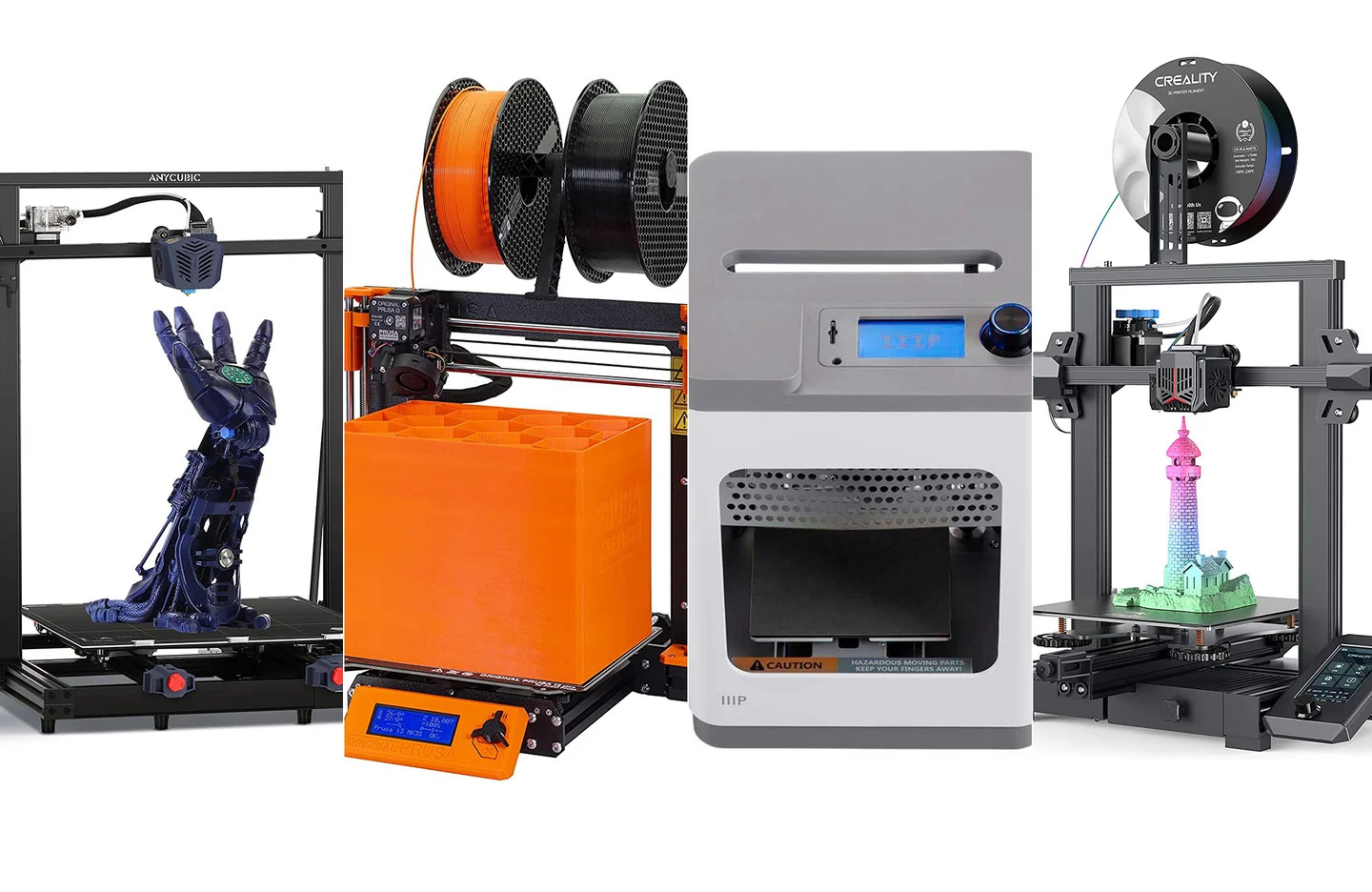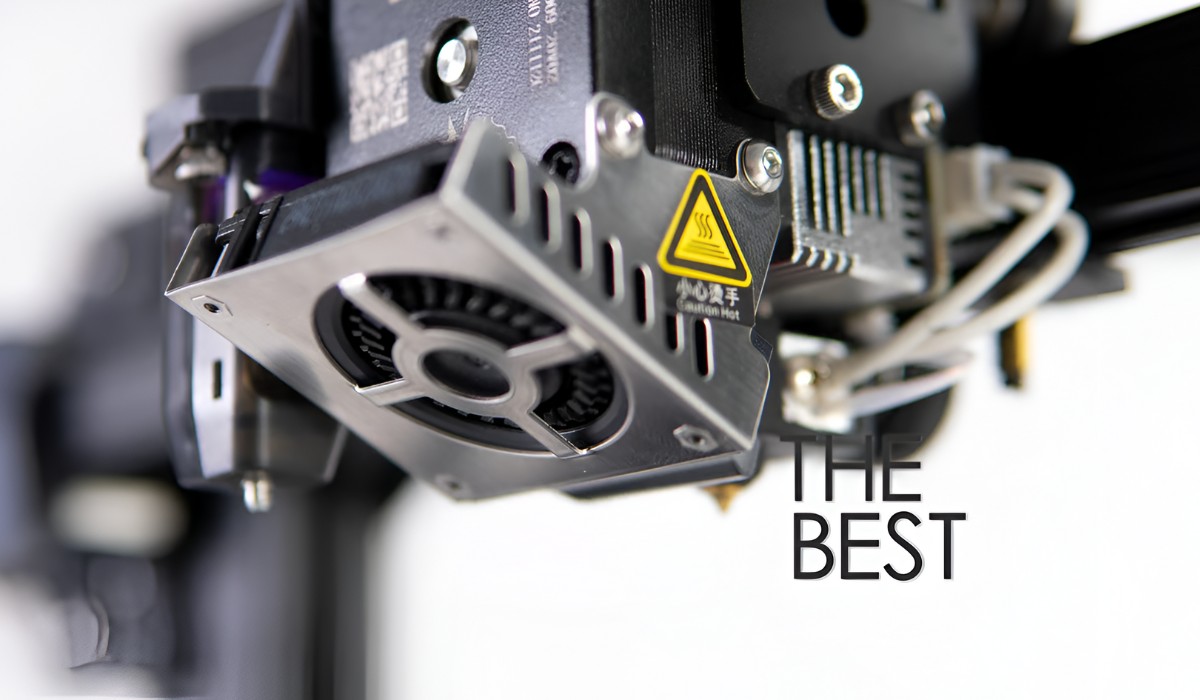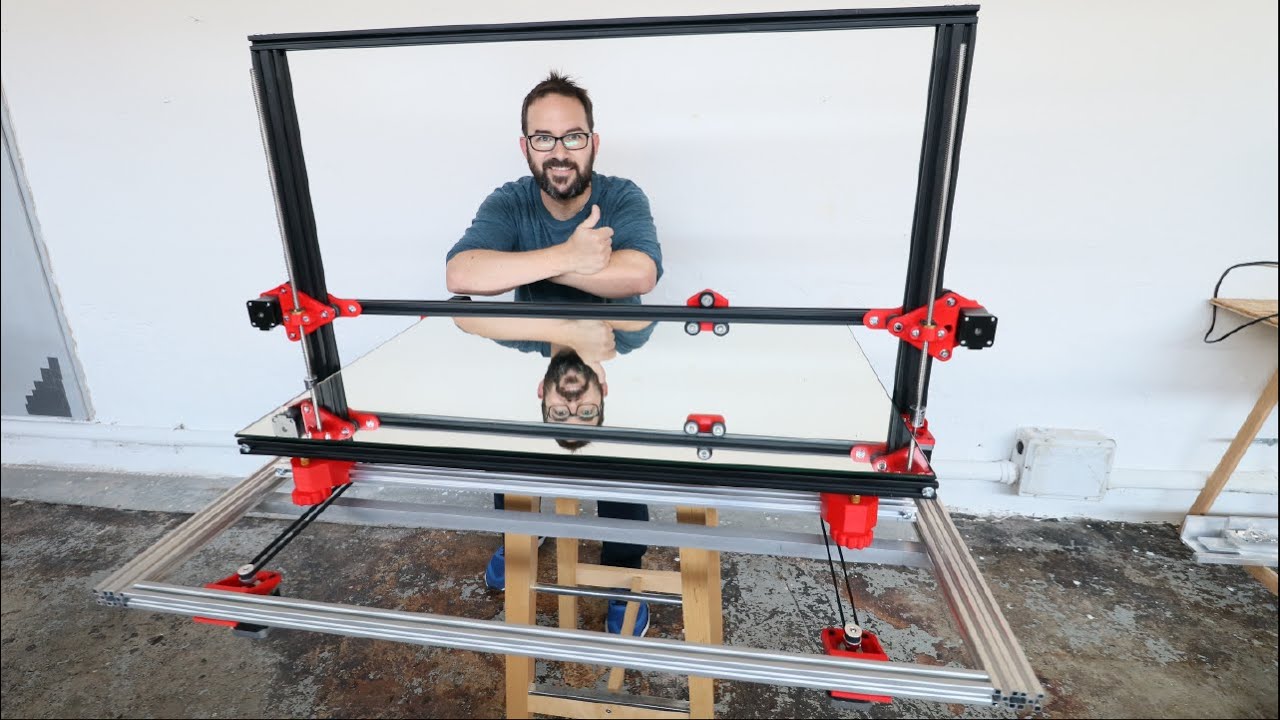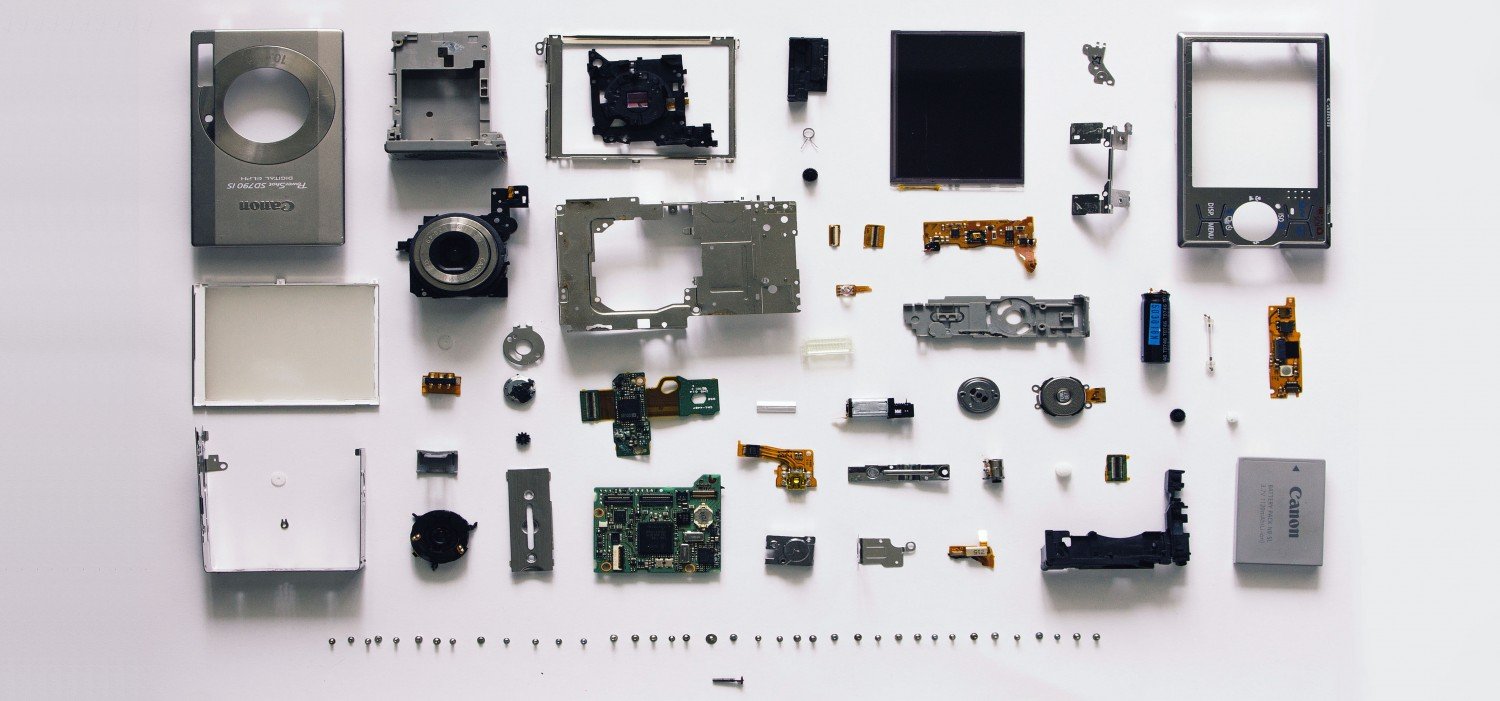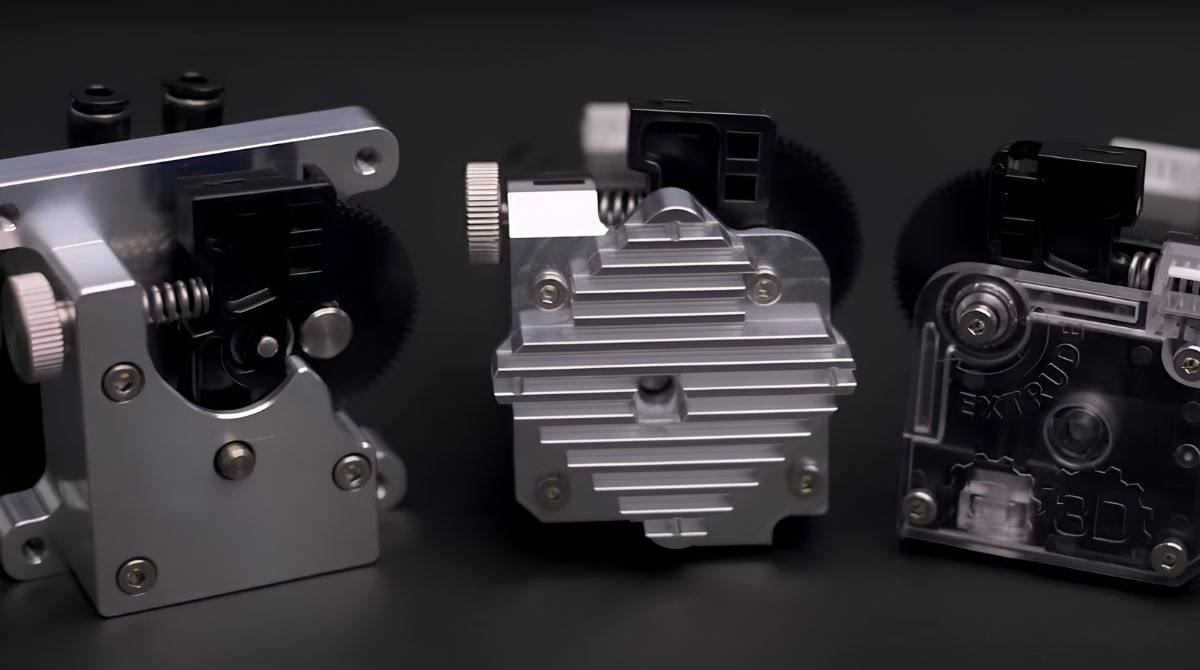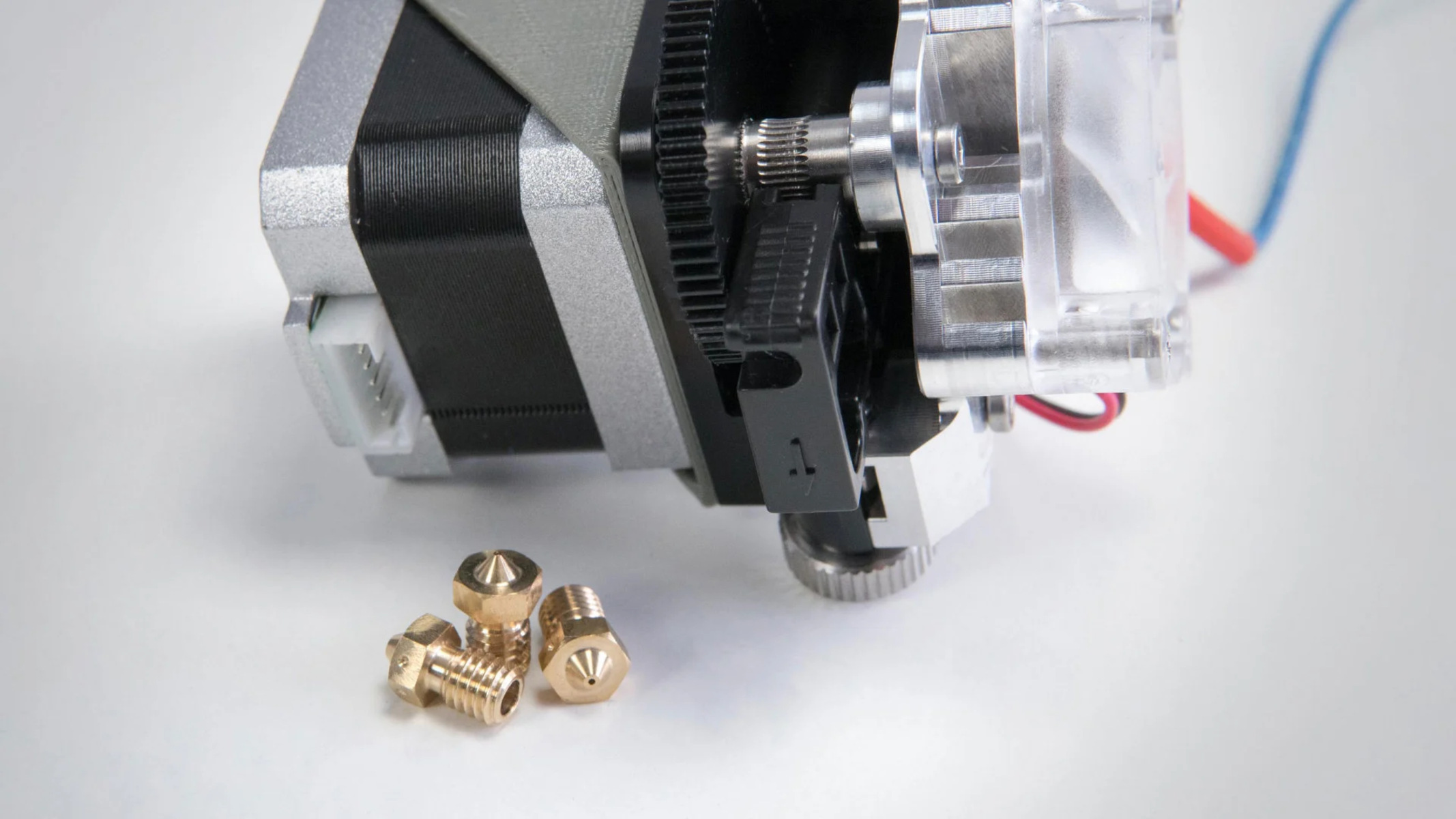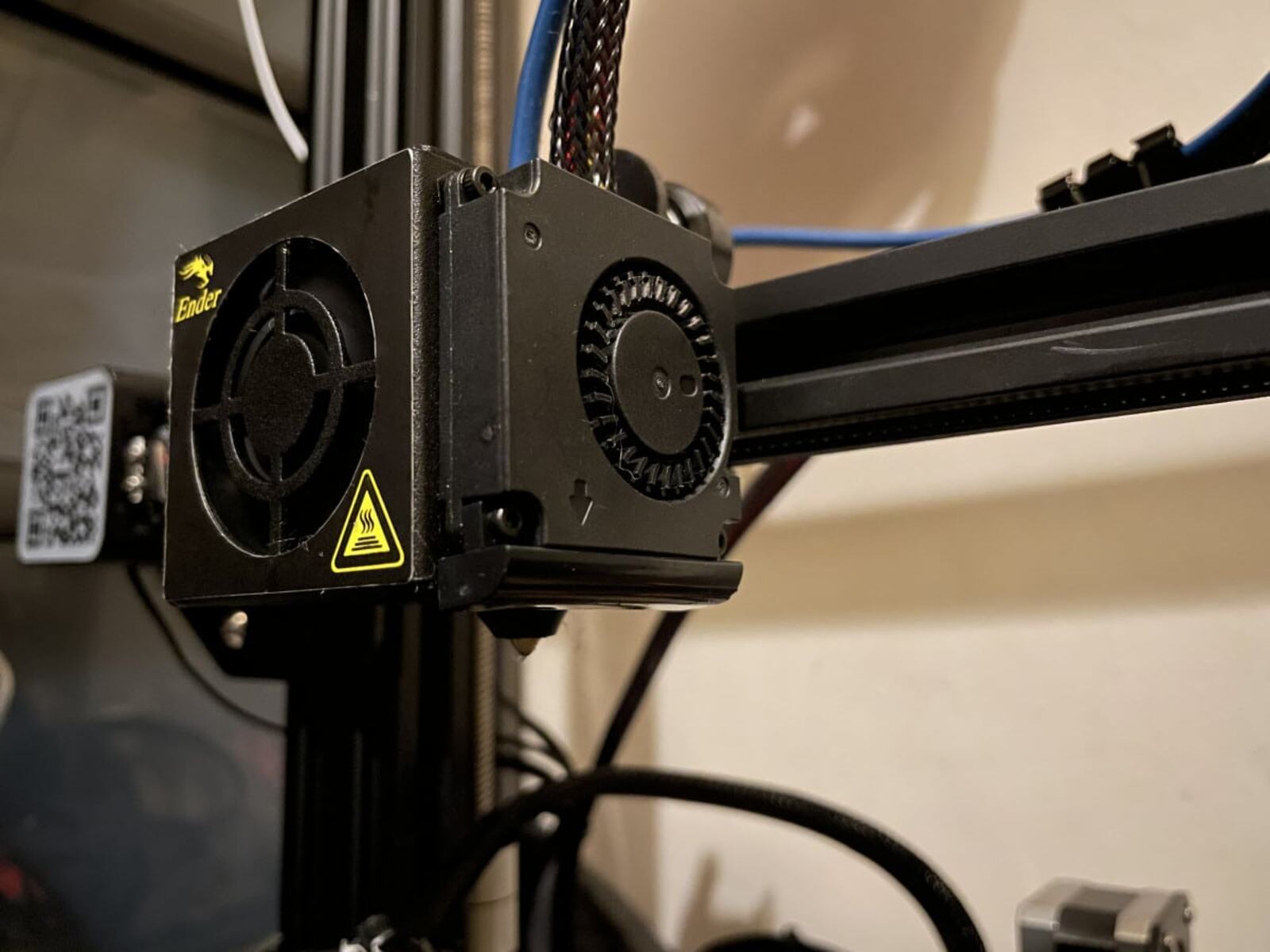Introduction
Welcome to the world of 3D printing! If you’re new to this exciting technology, you might have heard the term “hot end” tossed around. But what exactly is a hot end and why is it important in a 3D printer? In this article, we will explore the ins and outs of the hot end to help you understand its role in the 3D printing process.
A hot end is a crucial component of a 3D printer that is responsible for melting and extruding the filament material to build the desired object layer by layer. It plays a vital role in determining the quality and accuracy of the printed items. Understanding how the hot end works, its components, and the different types available can help you make informed decisions when it comes to choosing the right hot end for your 3D printer.
If you’re curious about how the plastic filaments are transformed into three-dimensional objects, you’re in the right place. Join us as we delve into the fascinating world of hot ends, uncovering the mysteries behind their functionality, and exploring the factors to consider when selecting and maintaining them.
This article aims to provide you with a comprehensive overview of hot ends so that you can confidently navigate the intricate realm of 3D printing. Let’s get started on our journey to uncover the secrets of the hot end and its pivotal role in the 3D printing landscape.
What Is the Hot End?
Before we dive into the inner workings of a hot end, let’s start by understanding what it actually is. In the context of a 3D printer, the hot end refers to the component responsible for heating and melting the filament material, typically plastic, so that it can be extruded to create the desired object.
The hot end is mounted at the end of the printer’s extruder assembly and is where all the magic happens. It consists of a nozzle, a heating element, a temperature sensor, and a cooling mechanism. The filament is fed into the hot end, where it goes through a heating process that transforms it into a molten state before being pushed out through the nozzle to form the printed layers.
The hot end is aptly named as it operates at high temperatures to ensure proper melting and flow of the filament material. The temperature typically ranges from 200 to 300 degrees Celsius, although this can vary depending on the type of filament being used.
One key aspect of the hot end is its ability to maintain a consistent temperature throughout the printing process. This temperature control is crucial for ensuring that the filament melts uniformly and doesn’t cool down too quickly, which could result in printing defects or clogging of the nozzle.
Now that we have a basic understanding of what a hot end is, let’s take a closer look at how it actually works and the various components that make up this essential part of a 3D printer.
How Does the Hot End Work?
The hot end of a 3D printer is a fascinating piece of engineering that works seamlessly to transform solid filament into a molten state and extrude it accurately to create intricate objects. Let’s explore the step-by-step process of how the hot end works.
1. Heating the Filament: The hot end contains a heating element, usually a ceramic or metal cartridge heater, that generates heat. This heat is transferred to the nozzle, where the filament is melted. The temperature is carefully controlled to ensure proper melting without causing degradation or burning of the filament material.
2. Melting the Filament: As the filament passes through the heated nozzle, it gradually softens and melts. The molten filament becomes pliable, ready to be extruded through the nozzle’s tiny opening. The nozzle diameter determines the thickness of the extruded filament, which ultimately affects the resolution and level of detail in the printed object.
3. Extrusion: In this stage, the molten filament is pushed out of the nozzle under pressure. The extrusion is achieved by a combination of factors, including the force exerted by the printer’s extruder assembly and the motor that drives the filament feed. The speed and precision of the extrusion process are crucial to ensure accurate layer deposition and maintain structural integrity in the printed object.
4. Cooling and Solidification: Once the molten filament is extruded from the nozzle and deposited onto the print bed, it starts to cool down rapidly. Cooling allows the molten plastic to solidify and retain its shape. The cooling process may involve passive cooling through ambient air or active cooling mechanisms such as fans or cooling blocks to expedite the solidification process and prevent unwanted sagging or warping.
5. Layering and Build Plate Adhesion: The hot end continuously repeats the process of melting, extruding, cooling, and solidifying the filament. Each layer is carefully placed on top of the previous one, gradually building the desired object. To ensure proper adhesion between layers and to the build plate, some printers use additional techniques like heated beds or adhesive materials.
It’s important to note that the hot end’s performance relies on precise temperature control and accurate filament feed. Any deviation in temperature or inconsistency in filament flow can result in print defects, such as stringing, oozing, or blockages. Therefore, maintaining the hot end in optimal condition is essential for achieving successful 3D prints.
Now that we understand how the hot end works, let’s explore the various components that contribute to its functionality and discuss the different types of hot ends available in the market.
Components of a Hot End
A hot end in a 3D printer consists of several essential components that work together to achieve precise filament melting and extrusion. Let’s take a closer look at each component and its role in the hot end’s functionality.
1. Nozzle: The nozzle is a small cylindrical component with a tiny opening through which the molten filament is extruded. It determines the diameter of the printed filament and plays a crucial role in defining the level of detail and resolution of the printed object. Nozzles are available in various sizes, allowing for customization based on the desired print quality and speed.
2. Heating Element: The heating element, usually a ceramic or metal cartridge heater, is responsible for generating the heat required to melt the filament. It is positioned around the nozzle to ensure efficient heat transfer. The temperature of the heating element is carefully controlled using a temperature sensor to maintain the desired temperature range, allowing for consistent filament melting.
3. Temperature Sensor: The temperature sensor, commonly a thermistor or thermocouple, is used to monitor the temperature of the hot end. It provides feedback to the printer’s control system, which adjusts the heat output of the heating element to ensure precise temperature regulation. Accurate temperature control is essential for achieving consistent print quality and preventing filament-related issues.
4. Heat Break: The heat break, also known as the thermal barrier, is a crucial component that separates the hot end from other parts of the printer, such as the cold end or extruder. It helps minimize heat transfer to areas where it could cause filament jams or other issues. The heat break is designed to create a thermal barrier, allowing the filament to remain molten in the nozzle while maintaining cooler temperatures in other sections.
5. Cooling System: To control the cooling and solidification of the printed filament, a cooling system is incorporated into the hot end. Typically, this includes a fan or fans that direct airflow towards the printed layers and the nozzle. Cooling is essential to ensure proper layer adhesion and prevent deformation or warping of the printed object as it is built layer by layer.
6. Filament Path: The hot end includes a dedicated path for the filament to travel from the filament spool to the extruder. This path is designed to minimize friction and ensure smooth movement of the filament. It may include components like PTFE tubing or other guide mechanisms to guide the filament towards the nozzle for extrusion.
These components work together harmoniously to transform solid filament into a molten state and extrude it consistently to create precise 3D printed objects. Understanding the role of each component is crucial for maintaining and troubleshooting the hot end effectively.
Now that we have explored the components of a hot end, let’s move on to discussing the different types of hot ends available and considerations for choosing the right one for your 3D printer.
Types of Hot Ends
When it comes to 3D printing, there are several types of hot ends available in the market, each with its own unique design and characteristics. Understanding the different types can help you make an informed decision when choosing the right hot end for your 3D printer. Let’s explore the most common types:
1. All-Metal Hot End: An all-metal hot end is a popular choice among 3D printing enthusiasts due to its versatility and ability to handle a wide range of filament materials. As the name suggests, it is constructed entirely from metal, allowing it to withstand higher temperatures without degrading. All-metal hot ends are particularly suitable for printing high-temperature materials like ABS, PETG, or even exotic filaments such as carbon fiber-infused materials.
2. PTFE-Lined Hot End: PTFE-lined hot ends incorporate a heat break and a thin layer of PTFE (polytetrafluoroethylene) tubing to guide the filament through the hot end. This design helps reduce friction and provides smoother filament feeding. PTFE-lined hot ends are commonly used for printing lower-temperature materials like PLA and other similar filaments.
3. Dual Extruder Hot End: Dual extruder hot ends allow for the simultaneous use of two different filaments. These hot ends have two separate nozzles and extruder assemblies, enabling multi-color or multi-material printing. Dual extruder hot ends offer greater flexibility and expand the range of possibilities for creating complex and visually appealing 3D printed objects.
4. Bowden Hot End: The Bowden hot end is a unique design where the extruder motor is located remotely from the hot end itself. Instead of directly pushing the filament through the hot end, it is guided by a tube or Bowden cable. This setup reduces the weight and moving parts on the hot end, allowing for faster movements and potentially higher print speeds. However, Bowden hot ends may require more precise filament control due to the increased distance between the extruder and nozzle.
5. Cyclops/Chimera Hot End: Cyclops and Chimera hot ends are specifically designed for multi-material printing. These hot ends have multiple inputs but only one output nozzle. This allows for seamless switching between different filament materials during a print job, enabling advanced color blending or creating models with dissolvable support structures. Cyclops hot ends have two inputs, while Chimera hot ends have two inputs and two separate nozzle outputs.
It’s worth noting that there are many variations and hybrid designs within these hot end types, each offering specific advantages and considerations. When selecting a hot end for your 3D printer, it’s essential to consider the intended use, filament compatibility, print quality requirements, and your personal preferences.
Now that we have explored the different types of hot ends available, let’s move on to discussing the factors to consider when choosing the right hot end for your 3D printer.
Choosing the Right Hot End for Your 3D Printer
Choosing the right hot end for your 3D printer is a crucial decision that can significantly impact the quality and capabilities of your prints. Consider the following factors when selecting a hot end:
1. Filament Compatibility: The first thing to consider is the type of filament you plan to use. Different hot ends have varying temperature ranges and material compatibility. If you primarily print with PLA, a PTFE-lined hot end might be suitable. For high-temperature materials like ABS or PETG, an all-metal hot end is a better choice.
2. Print Quality Requirements: The desired print quality and resolution also affect the hot end selection. Nozzle diameter plays a crucial role in determining the level of detail in your prints. Smaller nozzles result in finer details but slower print times. Consider the nozzle sizes available for the hot end you are considering and how they align with your desired print quality.
3. Multi-Material Printing: If you plan to experiment with multi-material or multi-color printing, consider hot ends specifically designed for these applications. Dual extruder or Cyclops/Chimera hot ends allow for seamless switching between materials and can open up new possibilities for creative and versatile printing.
4. Print Speed: The hot end design can also impact print speed. Bowden hot ends, with the extruder motor located remotely, tend to allow for faster movements, potentially resulting in higher print speeds. However, keep in mind that Bowden setups may require more precise filament control due to the increased distance between the extruder and nozzle.
5. Printer Compatibility: Ensure the hot end you choose is compatible with your 3D printer. Consider factors such as mounting options, wiring configurations, and firmware compatibility. Some printers may have specific hot end options or limitations, so check the manufacturer’s recommendations or consult with experienced users for guidance.
6. Budget: Last but not least, consider your budget. Hot end prices can vary depending on their features and quality. However, be mindful that investing in a higher-quality hot end can greatly enhance your printing experience and reduce the likelihood of issues such as clogs or inconsistent extrusion.
By considering these factors, you can make an informed decision when selecting the right hot end for your 3D printer. Remember that your specific needs and priorities may vary, so take the time to research and explore the options available.
Now that we have discussed the factors to consider when choosing a hot end, let’s move on to the next section, where we will explore the maintenance and troubleshooting tips for ensuring the optimal performance of your hot end.
Maintaining and Troubleshooting the Hot End
Proper maintenance of your hot end is essential for ensuring optimal performance and reliable 3D prints. Here are some important tips for maintaining and troubleshooting your hot end:
1. Regular Cleaning: Over time, debris, dust, or melted filament residue can accumulate in the hot end and nozzle, leading to clogs or poor extrusion. Regularly clean the nozzle and hot end using a soft brush or specialized cleaning tools. Additionally, perform hot and cold pulls (also known as atomic pulls) to remove any stubborn residue and ensure the filament path is clear.
2. Filament Quality: Always use high-quality filaments that are properly stored to prevent moisture absorption. Poor-quality or moisture-laden filaments can contribute to clogs and print defects. If you notice inconsistent extrusion or frequent clogs, consider using fresh filaments from reputable manufacturers.
3. Temperature Calibration: Check and calibrate the temperature settings of your hot end to ensure accurate and consistent heating. Use a temperature calibration test or a thermal camera to verify that the actual temperature matches the set temperature. This can help prevent issues such as under-extrusion or overheating.
4. Nozzle Replacement: Nozzles may wear out over time due to the constant heat and friction. If you notice decreased print quality or frequent clogs, consider replacing the nozzle. Choose a high-quality nozzle with the desired diameter and ensure proper installation according to your printer’s specifications.
5. Check for Bed Leveling: Proper bed leveling is crucial for ensuring the correct distance between the nozzle and the print bed. An uneven or improperly leveled bed can lead to adhesion issues or inconsistent print quality. Regularly check and adjust the bed level to ensure a proper first layer and optimal printing conditions.
6. Identify and Solve Clogs: Clogs can occur when the filament pathway is blocked, resulting in uneven extrusion or complete stoppage. If you encounter a clog, follow proper troubleshooting steps such as cleaning the nozzle, performing hot or cold pulls, or using a nozzle cleaning tool. If the clog persists, consider disassembling the hot end for a thorough cleaning or seeking assistance from experienced users or professionals.
7. Monitor Fan Operation: The cooling fan(s) in the hot end play a crucial role in maintaining proper cooling after filament extrusion. Ensure the fan(s) are functioning correctly and clean any accumulated dust or debris. A malfunctioning or blocked fan can result in overheating, leading to issues like filament jams or poor print quality.
8. Consult Manufacturer Resources: The hot end maintenance and troubleshooting process can vary depending on the specific printer and hot end model. Consult the manufacturer’s documentation, user manual, or online resources for specific guidelines and recommendations. They may provide valuable insights and step-by-step instructions tailored to your printer’s hot end.
By following these maintenance and troubleshooting tips, you can maximize the lifespan of your hot end, ensure consistent and high-quality prints, and minimize issues during the 3D printing process.
Now that we have covered the essential aspects of maintaining and troubleshooting a hot end, let’s conclude our exploration of this crucial component in 3D printing.
Conclusion
The hot end is a fundamental component of a 3D printer, responsible for melting and extruding filament to bring your designs to life. We have explored the various aspects of the hot end, including its functionality, components, types, and considerations for choosing the right one.
Understanding how the hot end works and its different components allows you to make informed decisions when it comes to selecting a hot end that aligns with your specific printing needs. Factors such as filament compatibility, print quality requirements, multi-material printing capabilities, print speed, and budget should all be taken into account.
Maintaining and troubleshooting the hot end is crucial for ensuring optimal performance and reliable prints. Regular cleaning, using high-quality filaments, calibrating temperatures, replacing nozzles when necessary, checking bed leveling, and addressing clogs are important maintenance tasks to keep your hot end functioning smoothly. Consulting manufacturer resources can provide further guidance tailored to your specific printer model and hot end.
With the knowledge gained from this article, you are now equipped to navigate the world of hot ends with confidence. Whether you’re a beginner or an experienced 3D printing enthusiast, understanding the hot end and its role in the printing process will help you achieve the best possible results and overcome any challenges that may arise.
Remember, the hot end is just one piece of the 3D printing puzzle, and there are many other aspects to explore and master. Continuously learning and experimenting will enhance your skills and unlock new possibilities in the world of 3D printing.
Happy printing!







